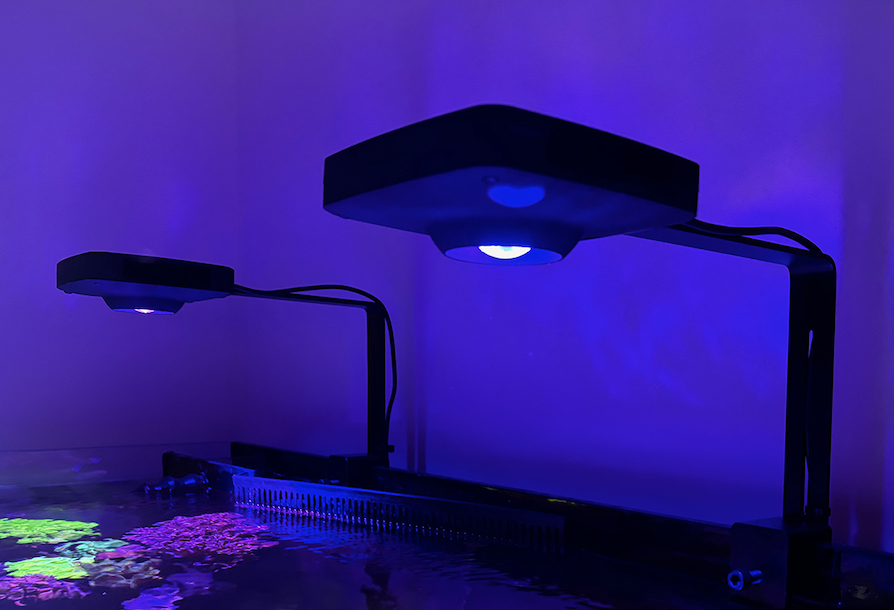Tropical Marine Centre has released a new LED aquarium light called AquaRay. Long-term European reefers will already be very familiar with the AquaRay brand name, as TMC was one of the pioneers of LED aquarium lighting some 15 years ago with the AquaRay AquaBeam. AquaBeam were ultra-low energy, passively cooled, and waterproof LED light bars and tiles which were a large part of the mass conversion to LED from T5 and metal halides, and they’re still available to this day.
With the current trend for modular LED fixtures supported by LED light bars, we have to say that AquaRay did that first too, and the AquaBar continues to light most of the fish sales tanks, in most of the fish stores in the UK. But times change, consumers now demand better spectrum, increased output, and app control, so this is where the new AquaRay P5 and P9 come in for 2024.
AquaRay P5 and P9 features
The new AquaRay is a 13x13x2.5cm/5.1″x5.1″x1″ compact light fixture that comprises a single central light puck, adjustable tank mount, and app control. Both models are programmable and include three adjustable channels, 10 preset lighting modes, storm moonlight and acclimation modes, fan cooling, built-in Wi-Fi, and app control.
The difference between the P5 and the P9 is in output. The AquaRay P5 has 50 watts maximum output, and the P9 is populated with more of the same LED chips and draws 90 watts maximum output. When the two AquaRays are measured side by side, more power equals more PAR for the P9. UK pricing for the two units (including mounting brackets,) is a competitive £219.99 and £299.99.
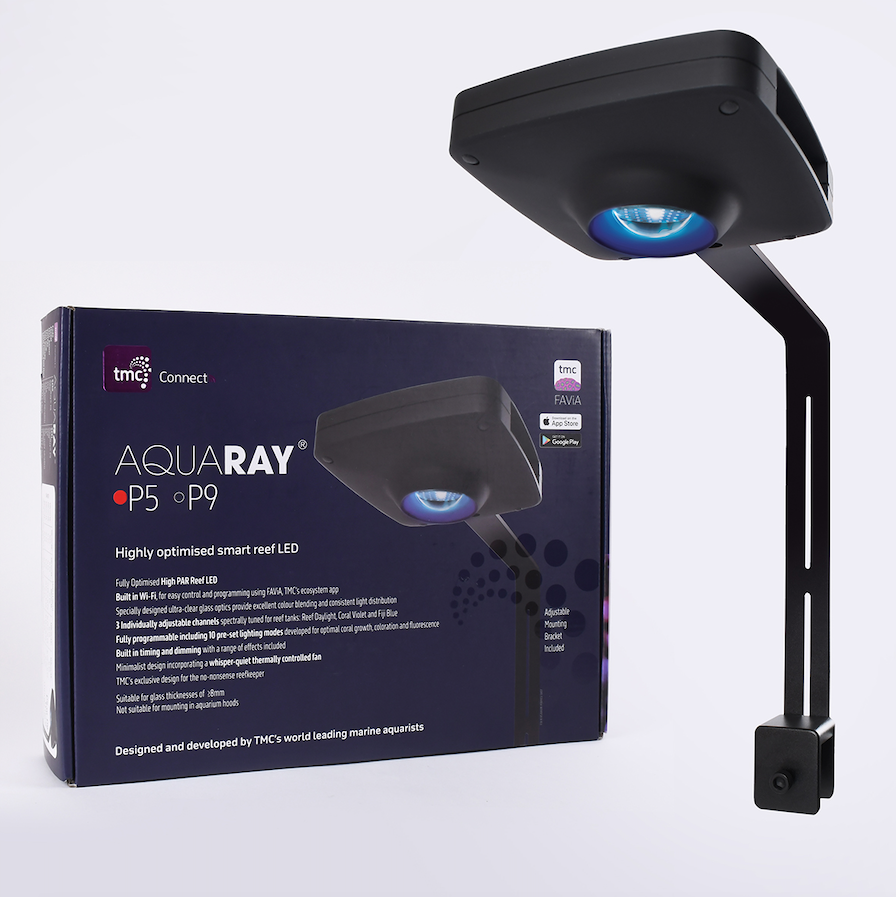
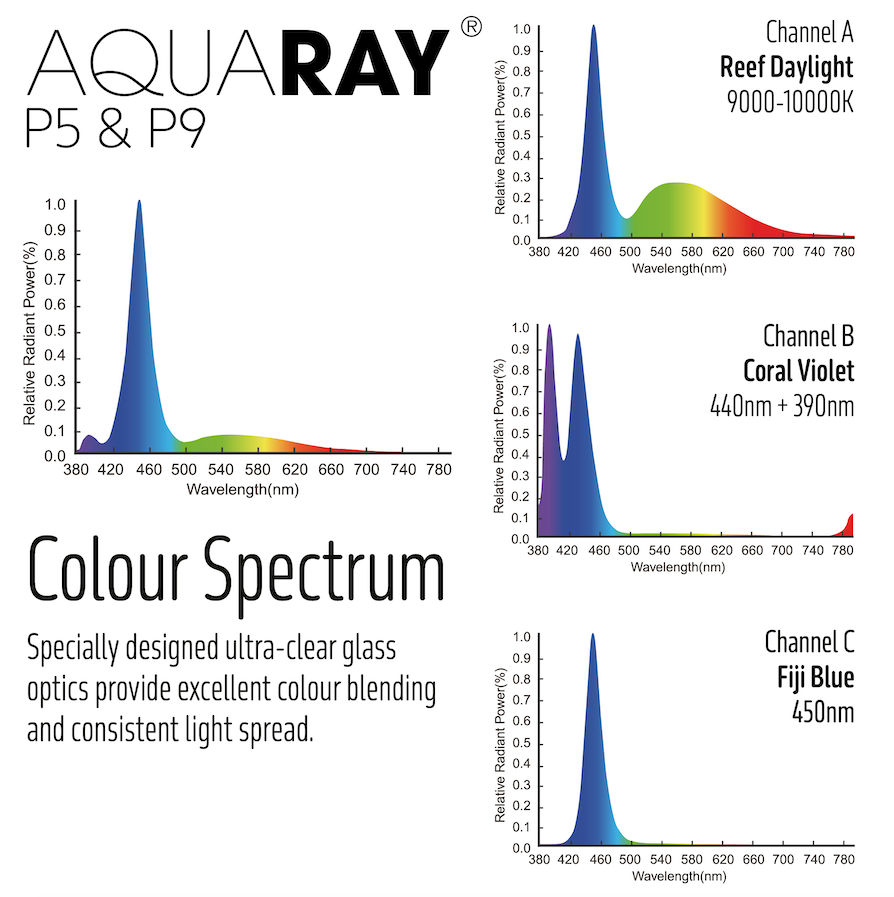
New TMC FAViA app
The AquaRay P5 and P9 are controlled by TMC’s new Favia app, which nearly warrants a write-up all of its own. In short, it’s an app for your phone that enables you to control TMC’s light and its other app-compatible equipment in the future. But this isn’t any old app, it’s the world’s first aquarium app to incorporate OpenAI – Artificial Intelligence – and that’s a big deal. So what does it do?
Firstly it connects to compatible equipment, which it searches for when you are in the vicinity. It allows for all the light programming and pump control you would expect, but that’s not the clever bit. The app encourages you to list your aquarium volume and its livestock inhabitants but can then advise on if they are compatible, and their needs, even down to feeding.
When we entered an empty 50-liter/13.2-gallon nano tank the OpenAI kicked in and made suitable nano reef livestock recommendations. They were right. We then added hypothetical clownfish and frogfish, OpenAI told us the frogfish would probably eat the clownfish, and when we added a hypothetical Acropora it said it was sensitive and needed stable water conditions, high light, and strong flow. Right again.
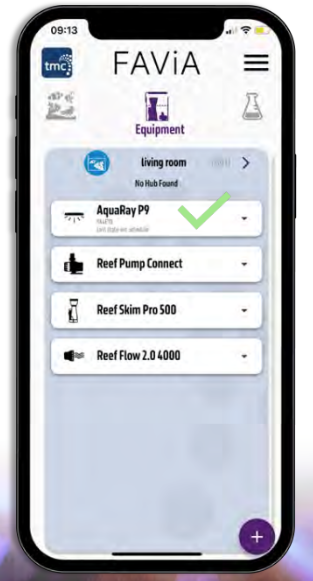
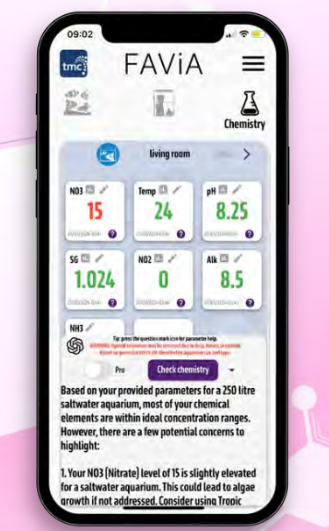
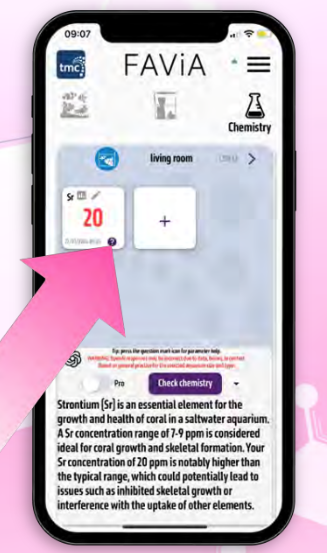
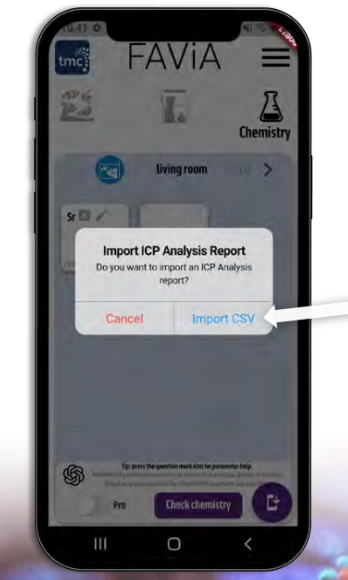
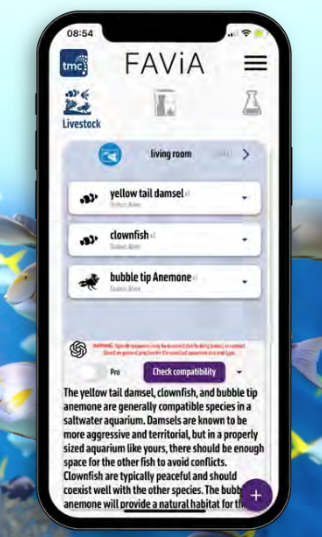
Go into the water chemistry side, enter your water parameters, and the Favia app will record them, plot them on a graph and OpenAI will check them for you and advise. We entered six parameters and it advised on them, raising potential issues and making recommendations. What’s more, it will do this for ICP test results too, so is ready for you to upload results as obscure as Neodymium to Palladium and Rhenium as an example.
There is a certain amount of brand steering in the advice like recommendations to feed TMC’s own foods as well as use of their partner products, like those from Tropic Marin. There is also a future collaboration with ICP Analysis where you will be able to add the CSV file from your ICP Analysis report. We are fans of ecosystem apps that can do lots of things in one place, and Favia can do this and more.
“No job is needed”
Last year Elon Musk famously said this about AI: “There will come a point when no job is needed – you can have a job if you want for personal satisfaction, but the AI will be able to do everything.”
TMC’s Favia app with integrated OpenAI has just given us a glimpse into the future of fishkeeping.


